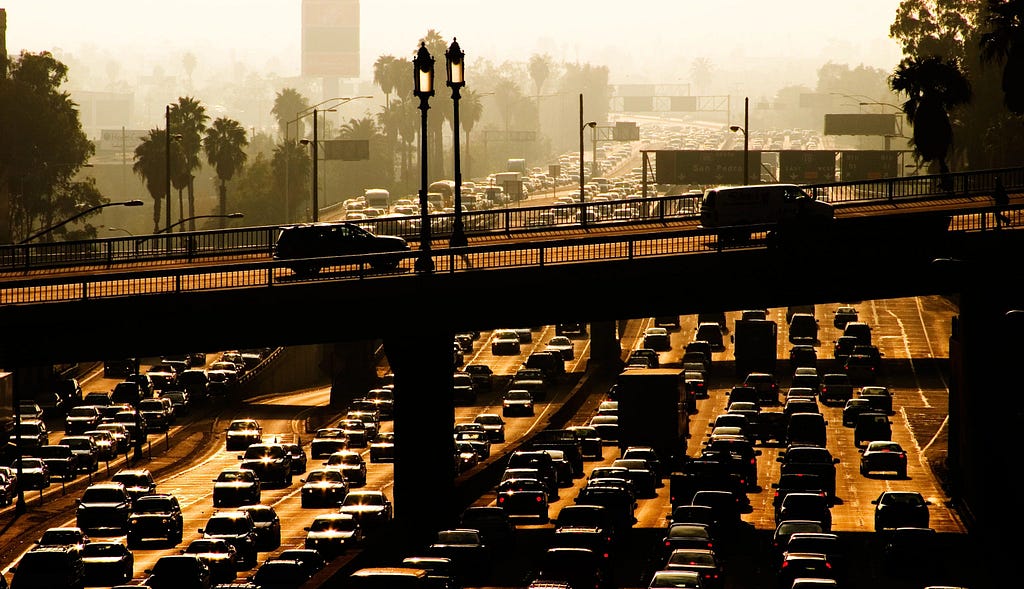Why we need strong vehicle and power standards for our economy to thrive in the face of climate change
The first two weeks of July saw the hottest temperatures on Earth in recorded history. As virtually the entire planet swelters, the human and economic costs to the U.S. and other global economies are rising. In 2022 alone, America spent over $165 billion on climate related disasters, according to the National Oceanic and Atmospheric Administration (NOAA).
E2 highlighted the escalating domestic economic cost of disasters over the last 40 years in Billion Dollar Losses, Trillion Dollar Threats: The Cost of Climate Change while Taxpayers for Common Sense echoed how the costs are impacting the federal budget and taxpayers in Paying the Price: Taxpayers Footing the Bill for Increasing Costs of Climate Change.

Since these reports were released, the US economy has had to absorb a multitude of additional hits. Impacts range from costly wildfires that destroy homes and businesses, worsened air quality, and interference with outdoor work and recreation due to extreme heat, to a climate risk fueled collapse in the Florida housing insurance market.
The scale of these costs of climate change are significant and only rising.
Hey? What about all that great federal investment in clean energy and climate solutions, won’t that help?
The answer is yes, in part! Major federal investments in clean energy have initiated important progress towards reaching U.S. climate goals. The Inflation Reduction Act (IRA) and the Bipartisan Infrastructure Law that passed last congress were the largest investment to the U.S. economy in generations. These investments make clean energy more affordable and accessible by incentivizing innovation and adoption through tax credits and loans for businesses and associated climate goals. Because of these key federal clean energy investments and broader global economic trends, we are headed toward a better and cleaner economy.
But to address the economic impacts of climate change, we need to make the transition and lower emissions faster. Speed is key to reducing the rate of climate change and ultimately curtailing its rising costs.
While it is important to celebrate the enactment of the IRA and acknowledge the signal it sends to the market for affordable and accessible clean energy, the carrots found in the IRA and related laws cannot get us all the way. Current assessments suggest we will be at 40% carbon emission reductions by 2030…short of the 50% we need to reach by that moment.
Because the speed of transition matters, we need to do more to close the emissions gap. That means strong and timely standards must be put in place to complement these incentives.Two fields where strong standards would be highly effective in driving costs and emissions down are power plants and vehicles–the nation’s top two sources of greenhouse gas emissions.
Currently the Environmental Protection Agency (EPA) and the Department of Transportation (DOT) are finalizing standards but they must move boldly and swiftly. Doing so would slash emissions, continue to scale up the clean energy economy, and create important market certainty.
That is why E2 submitted comments from more than 120 business leaders to the EPA, urging stronger vehicle emissions standards on June 16, 2023.
The longer it takes for the EPA to finalize strong standards, the longer it will take and the more difficult it will be for the U.S. to reduce emissions and ensure our economy is carbon neutral or better by 2050. Delays will also make it harder to take full advantage of the opportunity the U.S. has to be a global leader in EVs.
On the power sector-front, E2 business leaders urged the EPA in a second letter . to move quickly to pass strong power plant emissions standards to reduce emissions directly which will further bolster the adoption of cheaper, cleaner renewable energy. The cost of renewable energy is decreasing to the point that renewable energy is currently the cheapest source of new power. Increasing emissions standards will not only help slow the rise of climate disasters, it will also save businesses and consumers money.
Climate disasters are catastrophically costly events. But the U.S. can help mitigate their future severity right now by reducing emissions from high-polluting sectors as fast as possible.The U.S. is in the process of making unprecedented change that has the potential to impact the strength and resilience of our national and global economy. The EPA needs to pass strong standards that can ensure we meet our international commitments to lower emissions and protect our economy and planet.
Why we need strong vehicle and power standards for our economy to thrive in the face of climate… was originally published in e2org on Medium.
